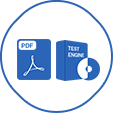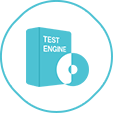Comprehensive and Detailed In-Depth Explanation:
As an Appian Lead Developer, managing concurrent development and operations (hotfix) activities across limited environments (DEV, TEST, PROD) requires minimizing disruption to Team A’s enhancements while ensuring Team B’s critical fix reaches PROD quickly. The scenario highlights no hotfix stream, active UAT in TEST, and a critical PROD issue, necessitating a strategic approach. Let’s evaluate each option:
A. Team B must communicate to Team A which component will be addressed in the hotfix to avoid overlap of changes. If overlap exists, the component must be versioned to its PROD state before being remediated and deployed, and then versioned back to its latest development state. If overlap does not exist, the component may be remediated and deployed without any version changes:This is the best approach. It ensures collaboration between teams to prevent conflicts, leveraging Appian’s version control (e.g., object versioning in Appian Designer). Team B identifies the critical component, checks for overlap with Team A’s work, and uses versioning to isolate changes. If no overlap exists, the hotfix deploys directly; if overlap occurs, versioning preserves Team A’s work, allowing the hotfix to deploy and then reverting the component for Team A’s continuation. This minimizes interruption to Team A’s UAT, enables rapid PROD deployment, and aligns with Appian’s change management best practices.
B. Team A must analyze their current codebase in DEV to merge the hotfix changes into their latest enhancements. Team B is then required to wait for the hotfix to follow regular deployment protocols from DEV to the PROD environment:This delays Team B’s critical fix, as regular deployment (DEV → TEST → PROD) could take weeks, violating the need for “quick deployment to end users.” It also risks introducing Team A’s untested enhancements into the hotfix, potentially destabilizing PROD. Appian’s documentation discourages mixing development and hotfix workflows, favoring isolated changes for urgent fixes, making this inefficient and risky.
C. Team B must address changes in the TEST environment. These changes can then be tested and deployed directly to PROD. Once the deployment is complete, Team B can then communicate their changes to Team A to ensure they are incorporated as part of the next release:Using TEST for hotfix development disrupts Team A’s UAT, as TEST is already in use for their enhancements. Direct deployment from TEST to PROD skips DEV validation, increasing risk, and doesn’t address overlap with Team A’s work. Appian’s deployment guidelines emphasize separate streams (e.g., hotfix streams) to avoid such conflicts, making this disruptive and unsafe.
D. Team B must address the changes directly in PROD. As there is no hotfix stream, and DEV and TEST are being utilized for active development, it is best to avoid a conflict of components. Once Team A has completed their enhancements work, Team B can update DEV and TEST accordingly:Making changes directly in PROD is highly discouraged in Appian due to lack of testing, version control, and rollback capabilities, risking further instability. This violates Appian’s Production governance and security policies, and delays Team B’s updates until Team A finishes, contradicting the need for a “quick deployment.” Appian’s best practices mandate using lower environments for changes, ruling this out.
Conclusion: Team B communicating with Team A, versioning components if needed, and deploying the hotfix (A) is the risk mitigation effort. It ensures minimal interruption to Team A’s work, rapid PROD deployment for Team B’s fix, and leverages Appian’s versioning for safe, controlled changes—aligning with Lead Developer standards for multi-team coordination.
[References: , Appian Documentation: "Managing Production Hotfixes" (Versioning and Change Management). , Appian Lead Developer Certification: Application Management Module (Hotfix Strategies). , Appian Best Practices: "Concurrent Development and Operations" (Minimizing Risk in Limited Environments)., , ]








